 Cangas de Onís: Medieval Bridge
Cangas de Onís: Medieval Bridge
The ancient Cronicones or at least those that survived the disastrous confiscation of Mendizábal, which occurred in the 18th century, asserted, not being badly sold as old paper at fairs and pilgrimages, that it was here, on the banks of the River Sella, where the famous caudillo Don Pelayo established his court, after defeating the Muslims in the mountains of Covadonga, a fact that happened in the year 722.
 Cangas de Onís: modernist and modern architecture
Cangas de Onís: modernist and modern architecture
Detail, by which Cangas de Onís is considered, in all fairness, not only as the place of establishment of the Asturian Monarchy, but also as the first capital of the Kingdom of Asturias.
 Cangas de Onís: Indian palace
Cangas de Onís: Indian palace
In fact, history and legend are so ingrained here that it is difficult for the traveler, barely set foot on its fertile soil, not to begin to become familiar with them and their association with names such as Fabila, son and follower of the a dynasty founded by Don Pelayo, who is told - and this was also confirmed by the medieval stonemasons who built the Romanesque church of the old San Pedro monastery - who was killed by a bear on a disastrous hunting day in the mountains.
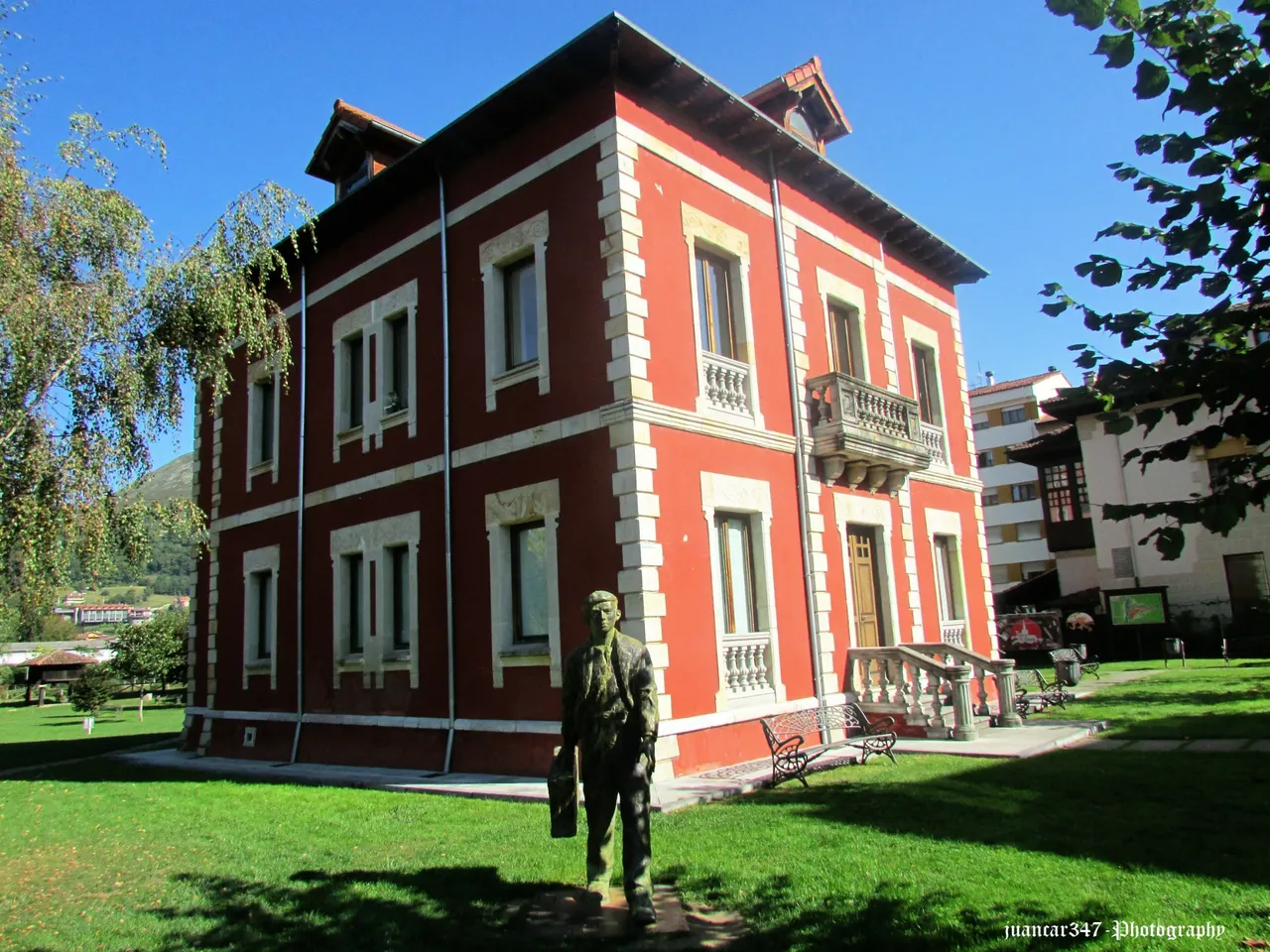 Cangas de Onís: tradicional architechture
Cangas de Onís: tradicional architechture
This story, verified, as has been said, in the capitals of the main entrance portico to the church of the old monastery of San Pedro de Villanueva - today, just a neighborhood of Cangas - is one of the main cultural attractions of the place, having The old monastery has also been converted into a luxurious National Parador, of well-known fame and quality.
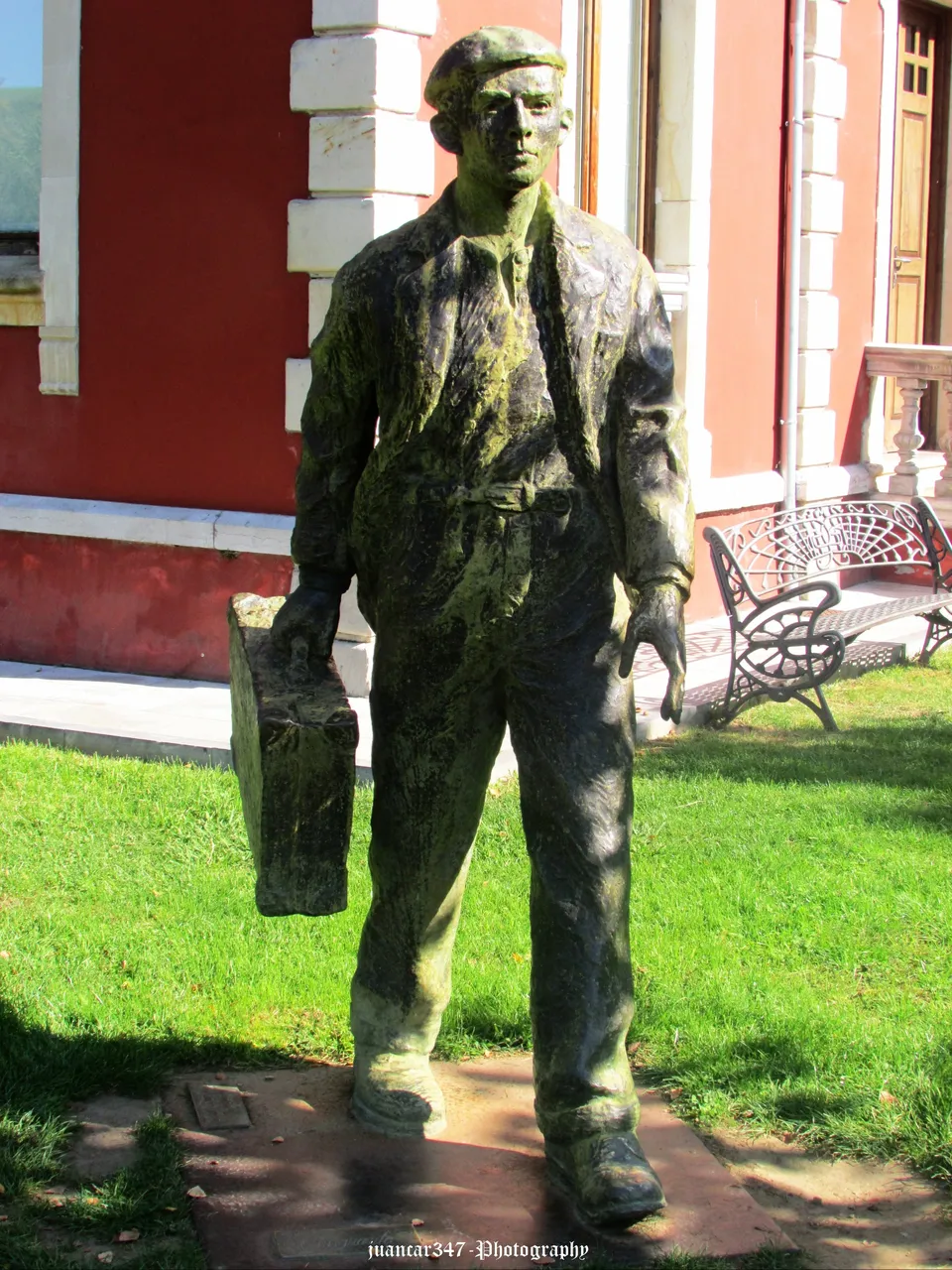 Indiano: asturian emigrant
Indiano: asturian emigrant
Given the privileged situation of Cangas de Onís, about 30 kilometers, approximately from Llanes and the Cantabrian coast and as many of the imposing Picos de Europa, this former capital of the Kingdom of Asturias was in the past and continues to be so today, the focus of interesting pilgrimage routes, which despite their harshness, maintain the attraction of adventure, developing through places of extraordinary beauty.
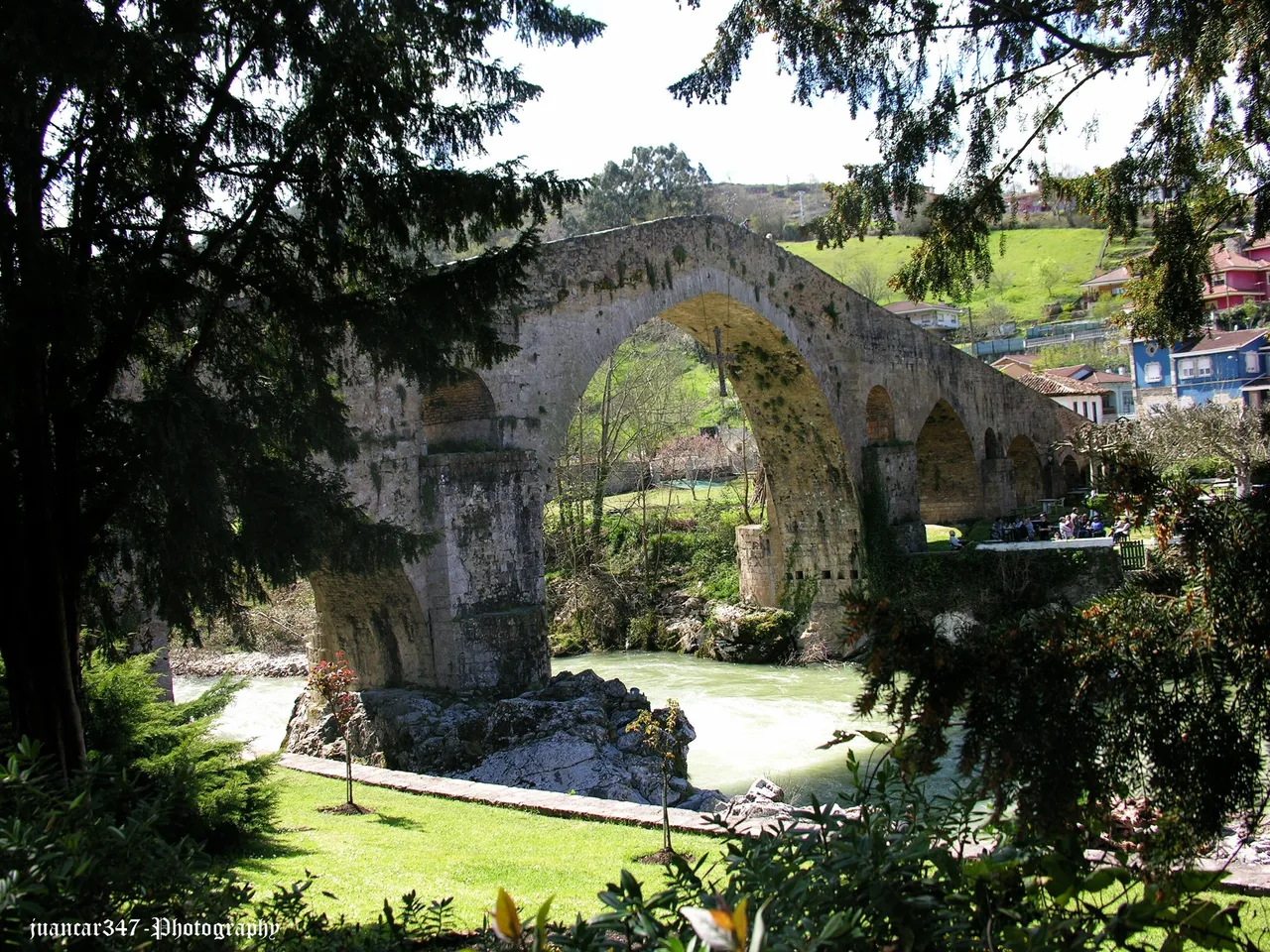 Cangas de Onís: view of the medieval bridge in which its shape of 'donkey's back' can be appreciated
Cangas de Onís: view of the medieval bridge in which its shape of 'donkey's back' can be appreciated
Indeed, the pilgrims who arrived at the main ports of the Cantabrian Sea -Castro Urdiales, San Vicente de la Barquera or Llanes- had several options to choose from on their arduous journey to Santiago de Compostela: they could do so by following the steep coastal paths, up to arrive in Galician lands or divert to Cangas de Onís.
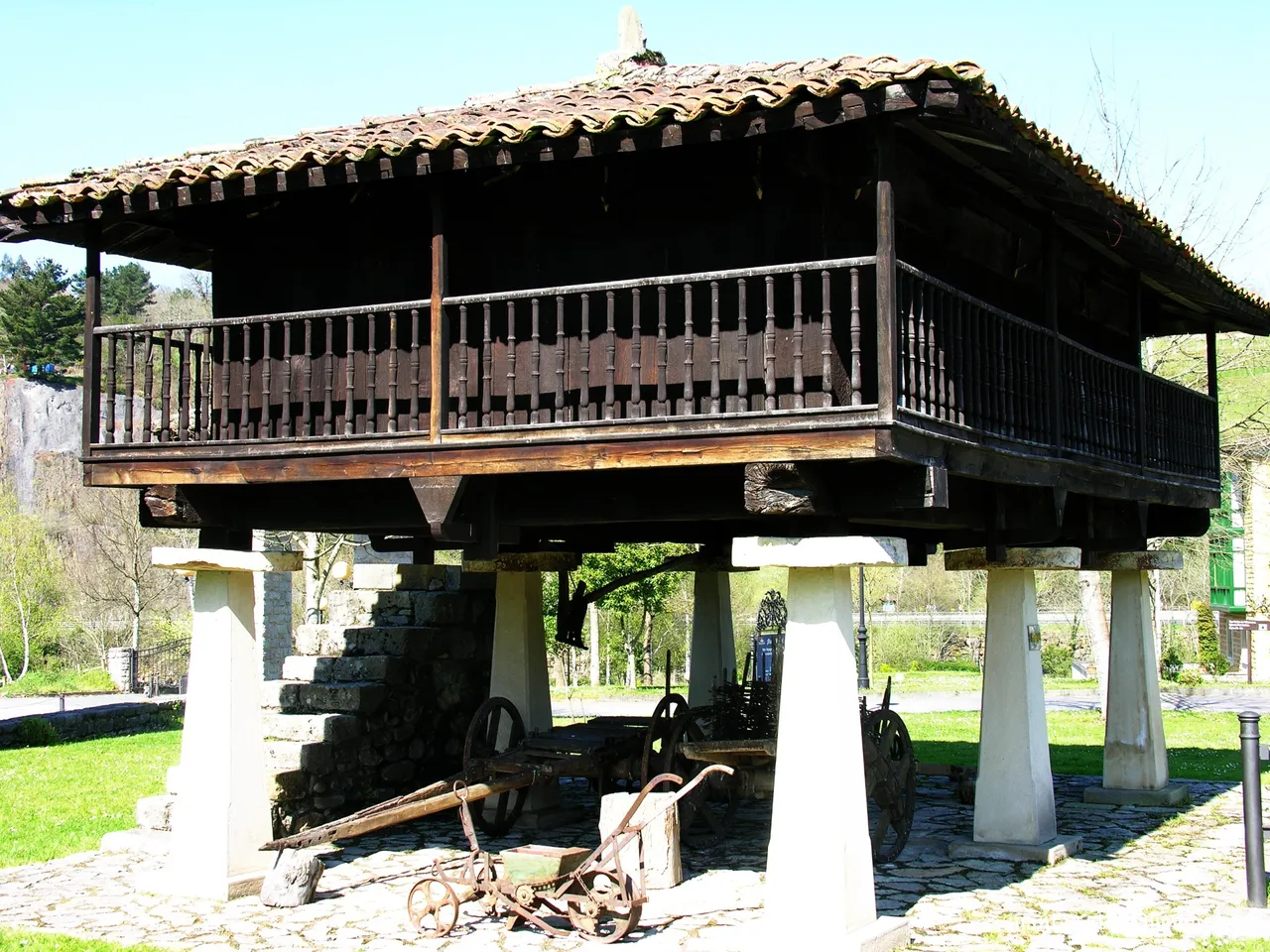 Cangas de Onís: Hórreo or traditional barn
Cangas de Onís: Hórreo or traditional barn
Those who took this last option, were faced with two alternatives: deviating towards the Picos de Europa, following the so-called Lebanensis Route, which was developed by the splendid perspectives of the Lebanense region, that is, the Cantabrian Liébana, in the heart of the Picos de Europa, where his goal was the famous monastery of Santo Toribio, a place where one of the largest pieces of the Holy Cross is still preserved or, on the contrary, use the Royal Paths of the interior, leaving behind councils such as that of Arriondas, Parres –with its magnificent 12th century church, dedicated to the mysterious figure of San Martín de Scoto- or Siero –with its beautiful Romanesque church of San Esteban, also known as' de los Caballeros'- until arriving in Oviedo and presenting their respects to the figure of the Savior, an extraordinary Romanesque image, which is preserved in the old cathedral.
 Cangas de Onís panoramic
Cangas de Onís panoramic
Of the remarkable monuments of Cangas de Onís, the curious hermitage of Santa Cruz deserves special mention, built on an old dolmen, which can still be seen from the inside, where tradition assures that the unfortunate Fabila was buried, although it is true, that except for certain utensils, human remains have never been found that could support it.
 Former monastery of San Pedro, current National Hoster of Cangas
Former monastery of San Pedro, current National Hoster of Cangas
Also a must-see is its famous medieval bridge over the river Sella, which preserves the primitive shape of the 'donkey's back', from the techniques used by the first pontiffs, among which the figures, well known to pilgrims, stand out. from Santo Domingo de la Calzada and San Juan de Ortega.
 Cangas de Onís panoramic
Cangas de Onís panoramic
Both this type of bridges, as the figure of the pontiffs, have their symbolic correspondence, since metaphorically speaking, through them one ascended to heaven to later descend to earth, being also the figure of the pontiff used by the Church, in reference to that very special character, the Pope, who also builds bridges or ties between heaven and earth.
 Cangas de Onís: hermitage of the Holy Cross
Cangas de Onís: hermitage of the Holy Cross
Worth noting, moreover, is that diverse architectural mix of neoclassicism and modernity, of which attention should be paid to the old palaces ordered to be built by the Indians: those Asturians, who emigrating to the Americas, had returned to their land, accumulating riches.
 Cangas de Onís: interiors of the hermitage of the Holy Cross
Cangas de Onís: interiors of the hermitage of the Holy Cross
But Cangas de Onís is also a starting point for nearby places, not without beauty and interest, in a curious mix of nature, history, tradition and adventure where you can let yourself be carried away by the particular interests of each one.
 Cangas de Onís: old dolmen on which the hermitage of Santa Cruz rises
Cangas de Onís: old dolmen on which the hermitage of Santa Cruz rises
In the vicinity of Covadonga, above the charming little town of Cardes, the Cueva del Buxu contains a fabulous sample of the artistic development of the Paleolithic, which spread through the rugged Cantabrian orography, leaving places of incredible monumentality, such as the Pindal caves, in Pimiango, those of Tito Bustillo or those of Cardamo.
 Cardes: old mill wheel with solar symbols
Cardes: old mill wheel with solar symbols
In Abamia, a town located about ten kilometers from Cangas de Onís, it is worth visiting the old church of Santa Eulalia, where the bodies of Don Pelayo and his wife, Queen Gaudiosa rest and where he was also buried, until relatively modern times. , a curious character of German origin, Roberto Frassinelli, who, in love with these lands, stayed to live in them, being one of the main compilers of Asturian history and culture and whom everyone knew as 'the German of Corao' .
 Abamia: church of Santa Eulalia. Inside it lie the remains of Don Pelayo and his wife, Gaudiosa
Abamia: church of Santa Eulalia. Inside it lie the remains of Don Pelayo and his wife, Gaudiosa
In the vicinity of Corao, and on the way to the Picos de Europa, in the small town of Villaverde, a humble Romanesque hermitage still preserves, more or less preserved in its head, paintings alluding to the myth of Santiago.
 Capital of the church of San Pedro: King Fabila and his fight to the death with the bear
Capital of the church of San Pedro: King Fabila and his fight to the death with the bear
And from Cangas de Onís to Arriondas, whoever has the opportunity to pass through there on a certain day in August, will be able to see the always picturesque and interesting show called the Descent of the Sella or the Festival of Canoeing.
NOTICE: Both the text and the photographs that accompany it are my exclusive intellectual property and therefore are subject to my Copyright.
Places of Interest cited in the post:
Villanueva de Cangas: monastery of San Pedro and Parador Nacional de Cangas.
Villaverde: Romanesque church of Santiago.
Cardes: prehistoric cave of Buxu.
Abamia: Romanesque church of Santa Eulalia.
Cangas de Onís: hermitage of the Holy Cross, Medieval Bridge, traditional architecture.
 Capital of the church of San Pedro: King Fabila says goodbye to his wife Froiluba, possibly the best kiss in Spanish Romanesque art
Capital of the church of San Pedro: King Fabila says goodbye to his wife Froiluba, possibly the best kiss in Spanish Romanesque art
Glossary:
Cronicón: chronologically ordered history that collects the historical events of the first peninsular Christian kingdoms.
Liébana: Cantabrian region of the Picos de Europa, famous, among its exorbitant beauty, for being the seat of the old monastery of Santo Toribio, which contains one of the largest pieces of the Holy Cross and also has a Puerta del Sorry, which according to tradition, grants pilgrims who, due to illness, cannot continue on their way to Compostela, the same privileges as if they had been able to do so.
Indiano: Asturian emigrant in the Americas.
 Villaverde: Romanesque church of Santa María
Villaverde: Romanesque church of Santa María
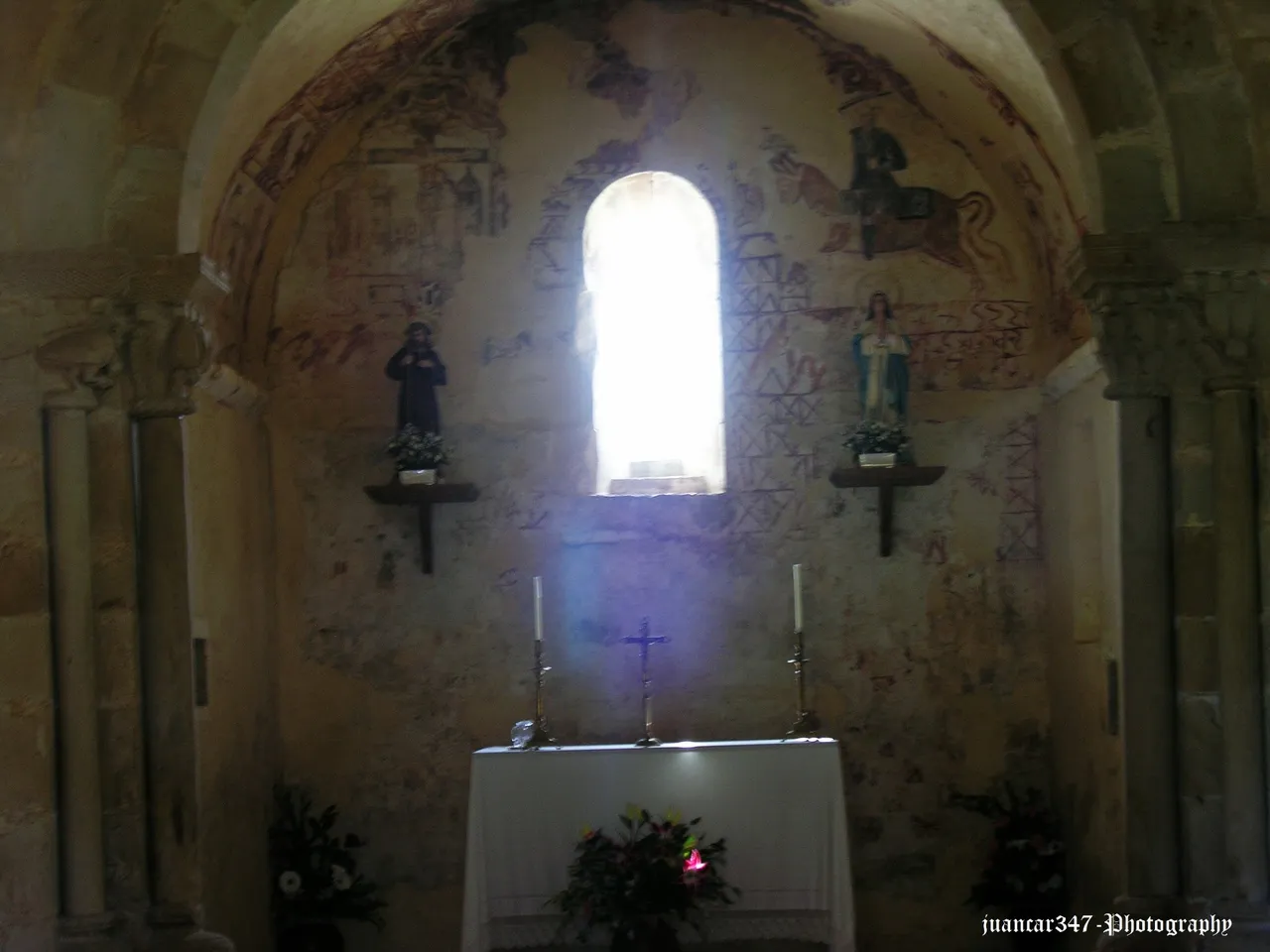 Villaverde: interior of the Romanesque church of Santa María and paintings with references to the Apostle Santiago
Villaverde: interior of the Romanesque church of Santa María and paintings with references to the Apostle Santiago